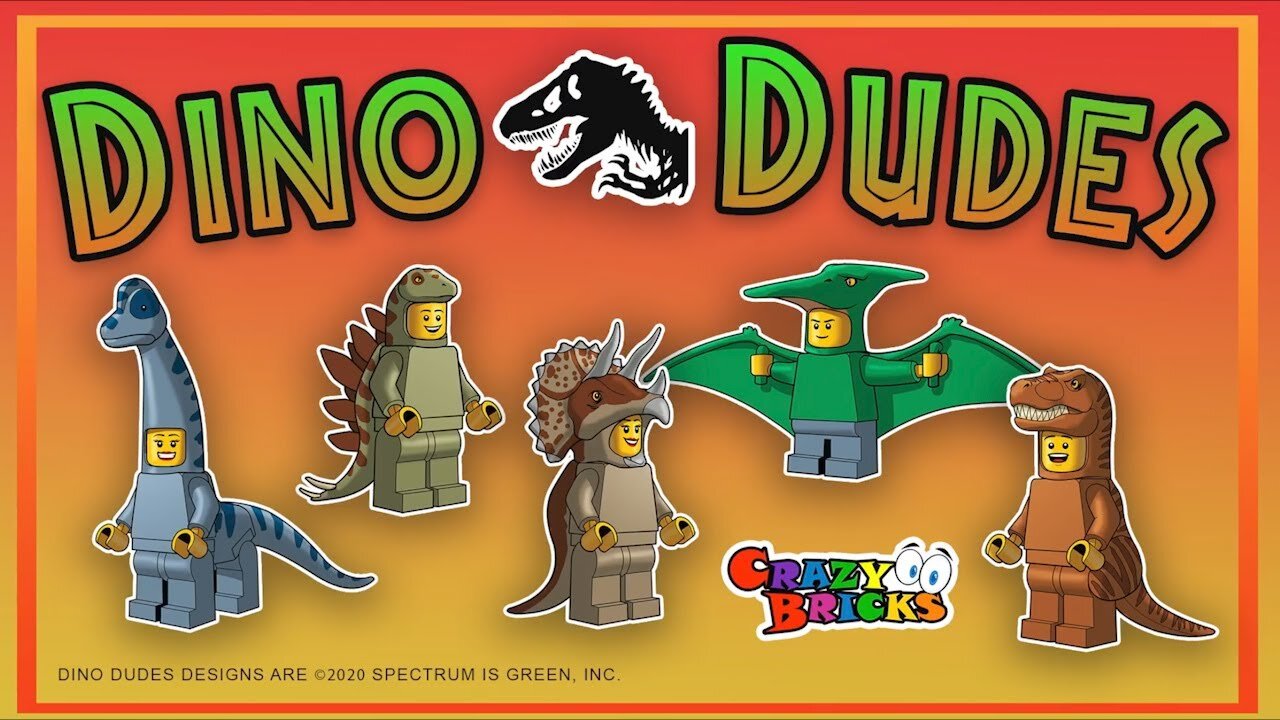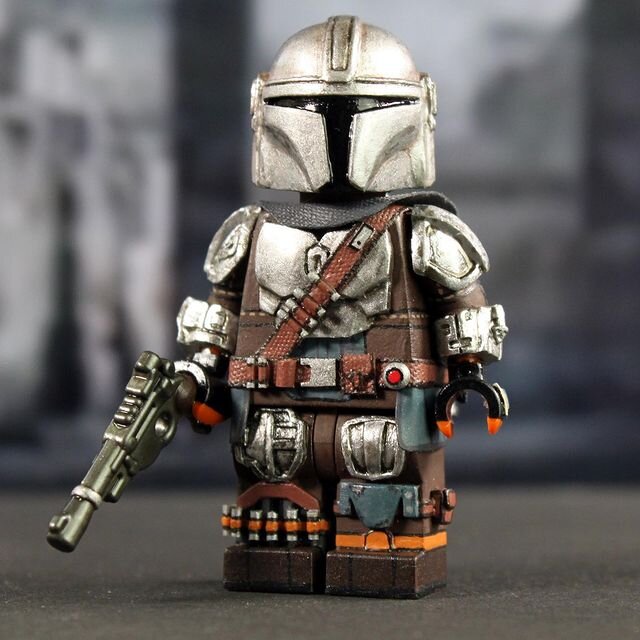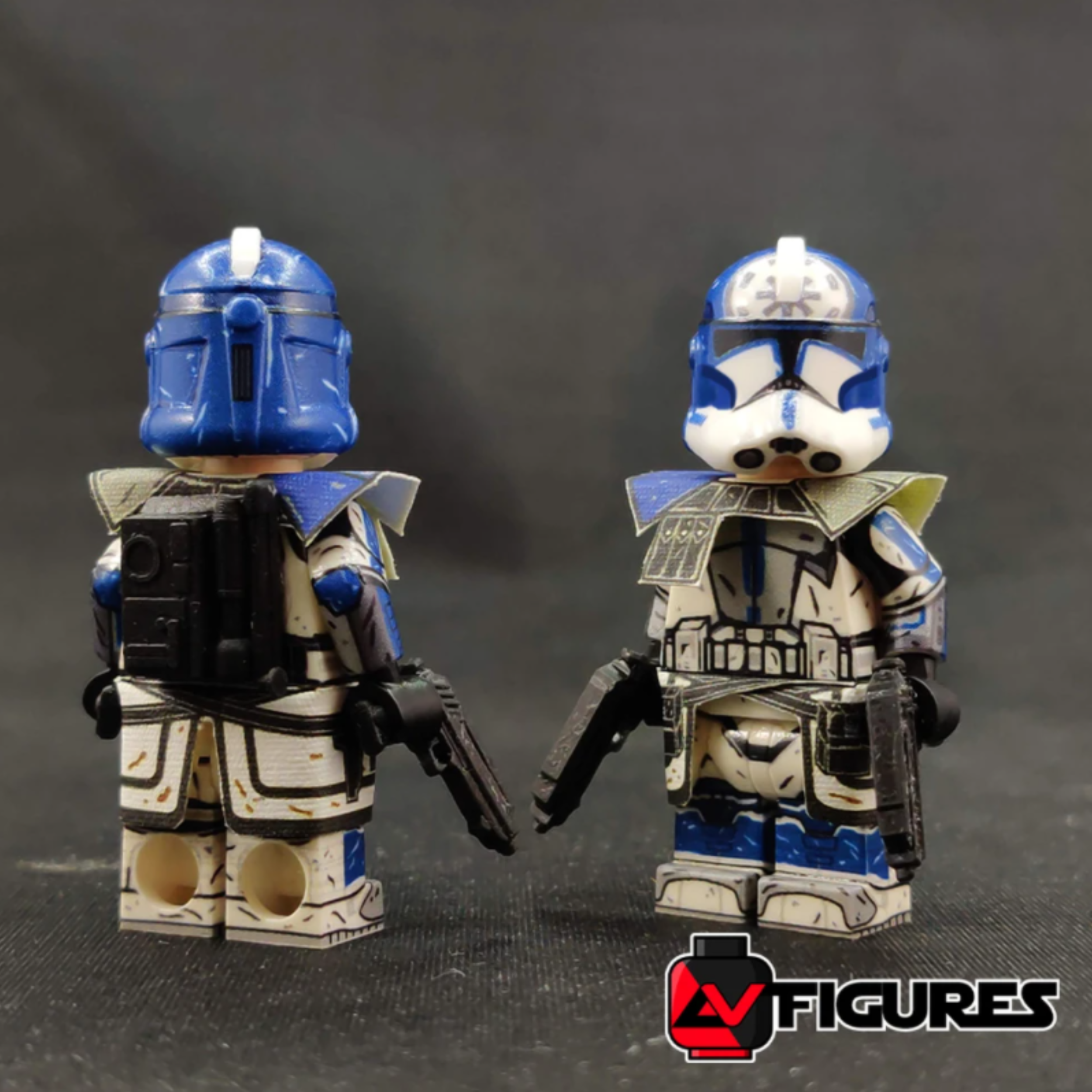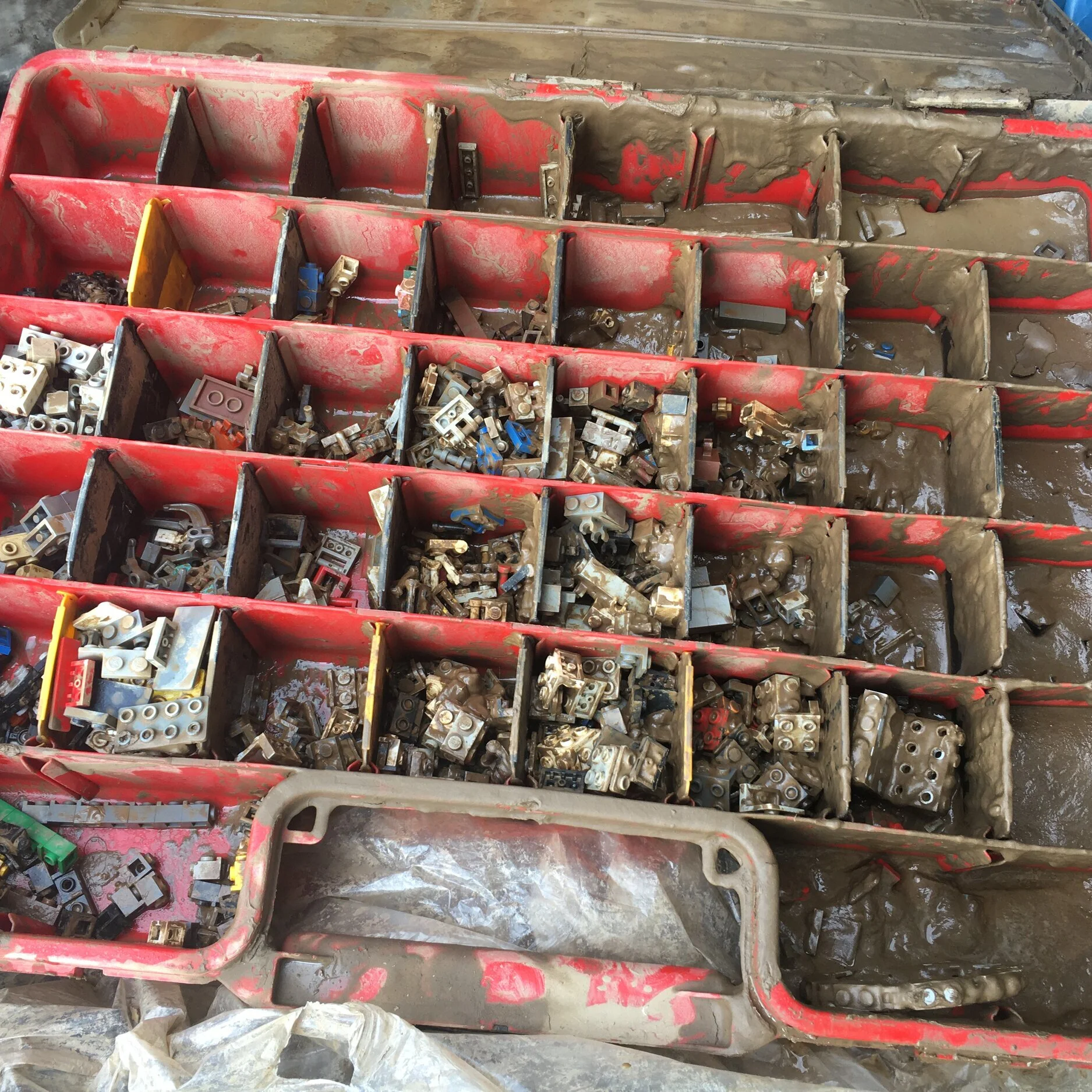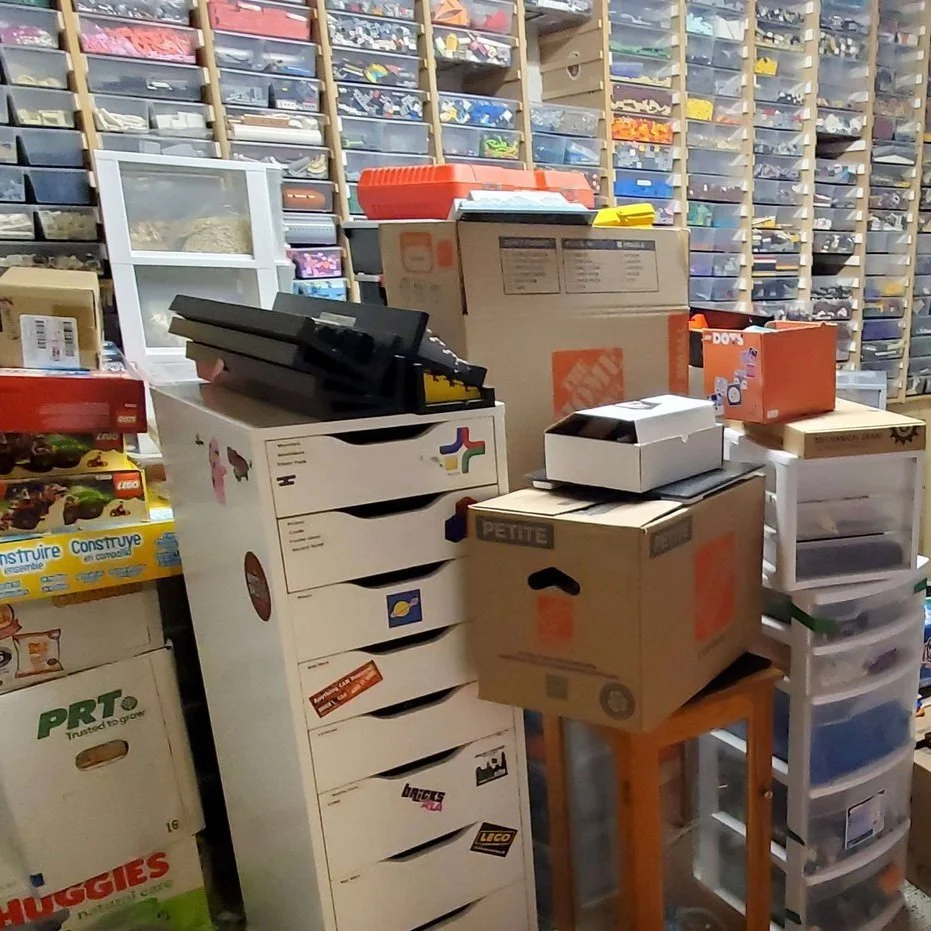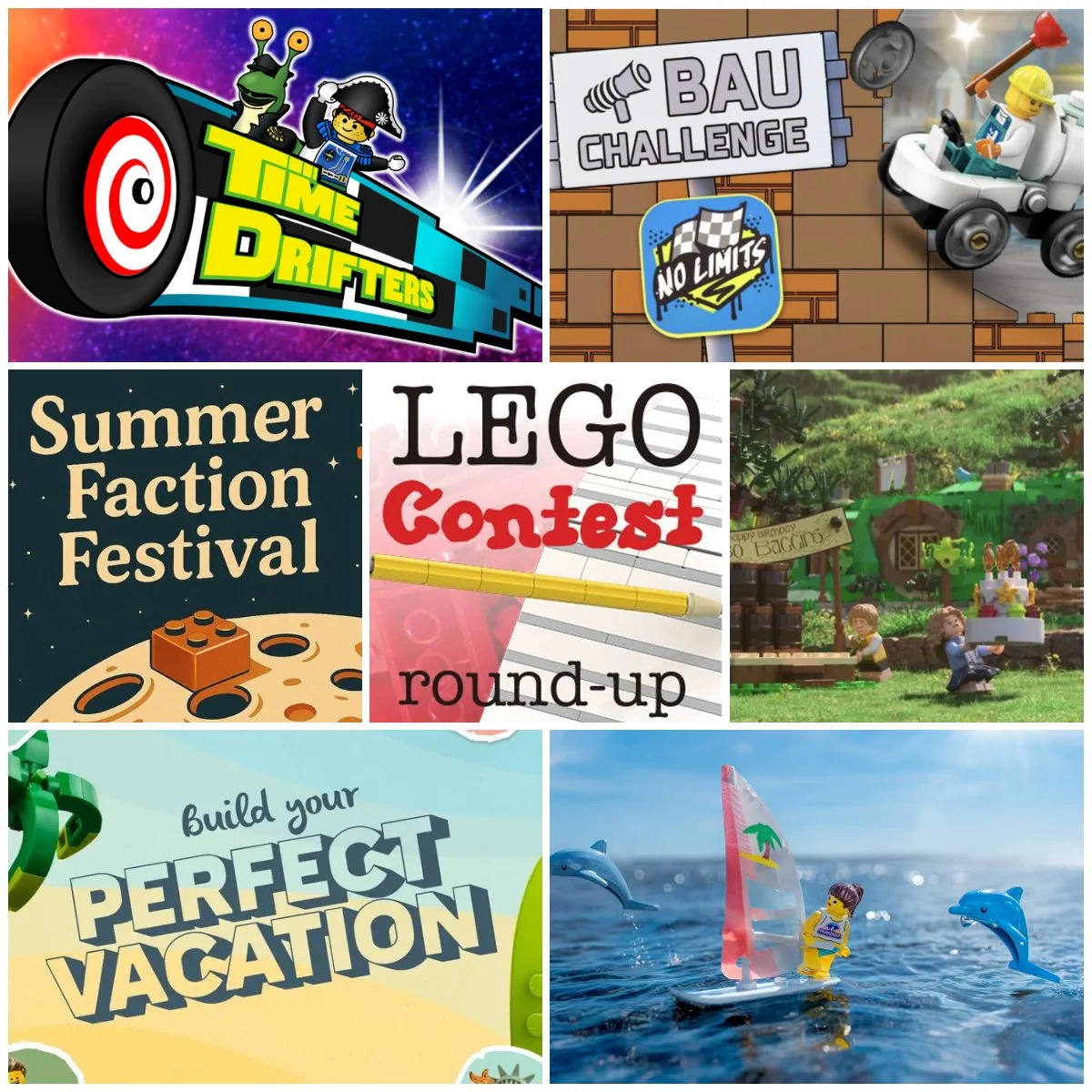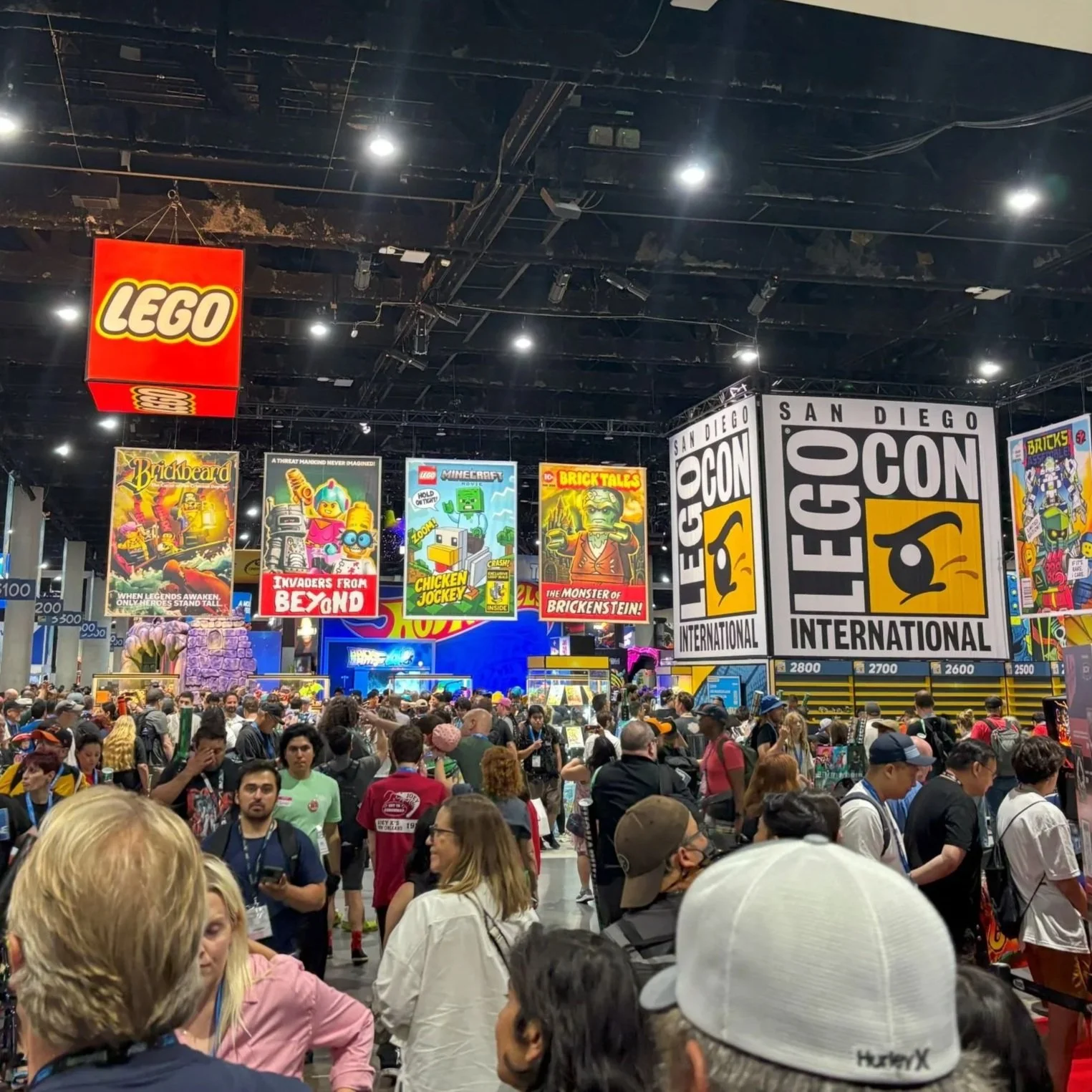An Introduction To The World Of Custom LEGO Minifigures
/Best of BrickNerd — Article originally published January 27, 2021.
You might think since LEGO has populated the world with more than 4 billion minifigures that there would already be every part in existence to satisfy anything a fan could want. Yet the world of custom LEGO minifigures is vast! From head to toe and all the accessories in between, devoted LEGO fans have customized minifigures to be exactly what they want them to be through printing, injection molding, painting, sculpting, cutting and more. But what do all of these terms mean? What goes into each of these processes and why does it matter? These are a few of the questions I aim to answer, but before we start, I must ask another question…
What Is Custom LEGO?
Custom LEGO could be loosely defined as any official LEGO piece that has been physically modified by the user or any custom accessory created to be compatible with LEGO geometry. Custom LEGO does NOT include counterfeit LEGO minifigures or accessories and does not include alternative building block toys.
Some might argue that custom-molded accessories do not deserve to be included under the title of “custom LEGO” because they are no different than counterfeit LEGO in the sense that TLG (The LEGO Group) did not produce them. There is no arguing that LEGO did not create these pieces, but custom-molded accessory companies are typically run by fellow LEGO enthusiasts and aim to produce a product that complements the already-existing LEGO products we love so much. Counterfeit operations typically steal designs outright, sell imitations of the real thing, and produce questionable figures in bulk for unscrupulous collectors.
A selection of custom LEGO from left to right: BrickWarriors, BrickArms, Citizen Brick, EclipseGrafx, Crazy Bricks
Just like in the regular LEGO community, there are many different ways someone might find their way into the customization hobby. You could be a collector, a builder, a customizer, just a fan, or even a business. None of these are mutually exclusive and that makes it difficult to distinguish where one section of the customizing community starts and another ends. Now with those definitions in mind, let’s take a look at the businesses that have emerged producing custom LEGO and the technologies they use.
Businesses That Provide Customization
There are many LEGO fans that have converted their hobby into a business. Sometimes all it takes is a spark of an idea, a wish for that one accessory that LEGO doesn’t make, or a willingness to provide the community with something new. Businesses typically fall into two categories: those that produce their own LEGO-compatible parts and those that use genuine TLG parts to create something new. Two great examples of each of these are Crazy Bricks and EclipseGrafx. Crazy Bricks often creates brand new LEGO-compatible accessories that have never existed before out of plastic (featured on BrickNerd discussing the Dino Dudes Kickstarter). Eclipsegrafx, one of our site sponsors, uses genuine LEGO parts and then UV prints their own designs onto them, typically printing on tiles and bricks for added detail. These could be custom bricks you receive at a fan event, road signs or even more complex accessories.
Injection Molding
In Crazy Bricks’ case, they use a process called injection molding to produce their minifigure-compatible accessories—which is the same process LEGO uses to produce their, well… everything! Injection molding simply put is the process of injecting molten plastic granules into a negative mold. The mold is a container with your object’s design hollowed inside of it, and when injected with plastic, it will create your product by filling in the hollowed shape with molten material then cooling rapidly.
GIF via pcbway.com
I say “simply” but it is quite a complex process that is not only costly but takes lots of specific machinery to achieve. The molds themselves can cost upwards of $5,000 to $10,000 each and in TLG’s case, they can cost from $100,000 to $200,000 each due to their strict quality standards and size of molds. Many other companies utilize this technology to bring their own custom pieces to market. Several even grind down official LEGO bricks to use when injecting so that their parts remain cohesive in color and quality with official LEGO products.
Crazy Bricks’ previously completed Kickstarter campaign.
A few other companies that use injection molding to create custom parts include Brickforge and BrickWarriors.
3D & Resin Printing
In response to these steep injection molding costs, I have personally begun to notice an uptick of new, small businesses starting to capitalize on the accessibility of 3D printing technology. This lessens the cost and shortens the time to provide parts immediately. LEGO themselves utilize 3D printing to test parts and have even included a 3D-printed part in a rare LEGO Inside Tour set.
One downside, it is common for 3D-printed items to have rough surfaces and less defined details. These results can be partially attributed to the usage of lower quality materials and printers, but it is ultimately an issue with the layering process itself. These rough results have in the past limited the usage of this technology to fast prototyping, but now, resin printers have begun to take the spotlight. Resin printers offer 3D printing accessibility but with smoother, more detailed, and higher quality finished products.
Timelapse example of a 3D printer at work from RepRapPro on Youtube
Timelapse example of a resin printer at work from The American Association for the Advancement of Science
The two processes work off the same principle of creating something layer by layer. However, that is where the similarities end for the most part. The key differentiator with resin printing is its usage of UV light to selectively cure layers of liquid resin stored in a vat which—layers that will stack and form your desired piece. On a typical 3D printer, your piece is formed from bottom to top on the printing bed. A resin printer works the same, but essentially lifts the final piece up from the resin vat as each layer gets hardened by UV light. Targeted UV light can be more fine-tuned than most mechanical arms doing 3D printing, hence the higher quality results.
UV Printing
Aside from creating parts from scratch, printing existing LEGO elements is also a way to create customization. EclipseGrafx utilizes genuine LEGO parts to produce their products. They use a process called UV Printing to apply their own designs to tiles, minifig heads, bricks—you name it! The UV or “digital” printing process is akin to your typical office printer but has the capabilities to print on nearly any surface thanks to its unique inks and drying method.
Unlike a traditional printer where ink typically dries in the air after the fact, UV printers utilize light to instantly cure the ink once it touches a surface—in this case, LEGO pieces. Just like injection molding, many other brands use this technology to make their designs come to life, but UV printing is not the only type of printing available.
Other notable companies that utilize digital printing to create custom LEGO products include Brickmania, Minifigs.me and FireStar Toys.
Pad Printing
PAd printing via Citizen Brick
Pad printing is the method that LEGO uses to create most of their printed elements. It is not as widely adopted by third-party companies because it is highly mechanical and expensive. I previously likened UV printing to your typical office printer, so if that is the case, then PAD printing is akin to working with rubber stamps.
In order to pad print a blank LEGO element, a press device with a silicone pad transfers the design by inking the pad then pressing it onto your desired object. The ink is captured on the pad via a plate—a metal sheet that has a design etched into it (hence the added expense). This etching acts as a reservoir for ink. When the silicone pad is placed in it, it receives the ink in the shape of the desired design which is then ready to be pressed onto your item.
Unlike UV printing, pad printing is only able to apply one color at a time which makes this process very time-consuming in comparison. From a business perspective, production is slower as well. Despite this, pad printing is sought after by producers and collectors alike for the aesthetic cohesion and perceived quality it provides similar to official LEGO-printed pieces. While both printing methods can yield high-quality results, UV printing leaves the ink slightly raised above the printing surface while pad printing will maintain a smoother profile. You can typically feel the difference by running your finger over the printing. Aesthetic cohesion like this is capitalized on by brands such as Citizen Brick who pair the pad printing method with a LEGO-like design style—even when their subject matter might be far from it.
A few other companies that use pad printing include Phoenix Customs and Christo7108.
Ways to Customize a Minifigure
Our next objective to introducing the customizing community is to feature customizers themselves and showcase how they take LEGO and other accessories and transform them into highly-detailed works of art, exactly how they want them. Obviously, the aforementioned businesses are customizers in their own right but when I use the term from now on, I am specifically referring to people who create “customs” that are not mass-produced and are more D.I.Y. in nature. The customizer community includes painters, sculptors, decalers, modders, and more. Some of these disciplines work hand in hand with one another, while some are rarely used in conjunction with each other.
For instance, sculpting and painting have a lot of overlap thanks to a finished sculpt’s need for paint and a painter’s need for certain parts to be sculpted in a way that perfectly captures the character they are creating. This co-dependency produces many customizers who are strong in both disciplines, but it has also opened the door to collaborations where the most talented sculptors team up with equally talented painters to create a single figure. That said, it is rare to see a sculptor who also specializes in decal work, for example, because decals are not the best suited to be used with custom sculpted elements.
Sculpting
Custom-sculpted Mandalorian minifgure by @lm9_productions
Sculpting can be utilized for capturing details as minor as a strand of hair or full body sculpts that transcend the conventional minifigure form. There are two popular sculpting material brands: Greenstuff and Procreate. They are both A/B two-part epoxy putties, though each offers different working conditions and cured qualities. To activate the material, you must mix both materials together (part A and part B) into one consistently-colored putty which will then harden over time.
From my experience, Greenstuff is a sticky and tough material to manipulate. This difficulty is partially due to what is called “shape memory” which is the tendency for the material to want to shift forms to its original shape while being sculpted. In practice, this means you might push the putty one way while sculpting only to find it attempting to shift back another way into its original place. One benefit of Greenstuff is that it is much harder when cured making it more resilient to sanding or filing. Procreate, on the other hand, is less sticky and much easier to manipulate in the moment because it lacks a strong shape memory but does not harden as much. Both putties offer great options for specific needs. Many veteran sculptors choose to keep both on hand and will use them interchangeably as their project requires.
Painting
The sculpted Mandalorian armor by lm9 after painting
When hearing about customizing LEGO, I bet a lot of you thought about children using a Sharpie to quickly draw on their minifigures. That is the unfortunate reality for many poor Clone Troopers which are now tainted with irreparable marker smudges. However, simple and accessible minifigure modifications like that are the foundation for many customizers in the community. If you make it past that awkward Sharpie phase in nearly every customizer’s history, you’ll no doubt arrive at more detailed painting soon after.
Painting is an essential technique used by most customizers. It allows for the total reimagination of pieces and transforms an ordinary minifigure into an exquisite masterpiece. The small scale and simple features of a LEGO minifigure might seem limiting, but for customizers, it offers a blank canvas for a unique challenge and specific aesthetic. Painters have the ability to create characters from any genre they desire with nearly no limitation of parts required. To paint such fine detail, many opt for a toothpick or the tip of a pushpin to gain absolute control over every single drop of paint. It’s not magic—really, any acrylic paint will do the trick as you get started. But what matters most is that you have fun and continue practicing.
Modding
Within the LEGO customization community, modders are those who change third-party elements more than official TLG pieces. Yes, “modding” is a universal skill amongst customizers to alter any piece with a combination of cuts and glue, but what I am referring to specifically is a phenomenon most notable in the military community. The LEGO military scene was formed around companies like BrickArms who use injection molding to create minifigure-compatible weaponry and accessories that will turn any old minifigure into Rambo. This is because LEGO claims it does not make life-like toy versions of weapons.
Fans of BrickArms with an eye for accuracy will often seek out parts in the brand’s catalog to alter and create something new. Modifications like this range in difficulty and could be as simple as removing the scope of one rifle and gluing it to another or as complex as making fully removable segments of the weapon which can be interchanged with alternative pieces as desired.
Modifed BrickArms m249 created by @detroitika
The scopes, stocks, grips and magazines are all completely modular
Decals
Finally, one other significant way to transfer detail to minifigs is by utilizing decals. “Decalers” is another group in the customizing community that relies on the use of third-party products, in this case, decals. Using decals was an extremely prominent technique at the inception of the customizing-LEGO-minifigures-trend in the mid-2000s but has since fallen out of favor. Over time, many companies offering fully decaled figures transitioned into printing for the efficiency and precision the process offers.
However, decaling did not die completely and is still widely used by Star Wars fans in particular because of the user’s ability to produce many highly detailed figures on a budget. One of the largest decal producers today is AV Figures who sells them as a sheet that you can then apply to a minifigure. Decals can be thought of like applying a sticker but with a few more steps.
Waterslide decals are the type most often used for customizing LEGO. The decal must first be soaked in warm water which activates the glue and allows you to slide it off the backing sheet and onto your desired surface. Once it is applied, it can be further adjusted before completely bonding. This process requires patience and precision, thus making it quite time-consuming. Due to this needed skill, there is now a demand for talented applicators who work for commissions and will decal anything requested.
Conclusion
So why does this all matter? As you can see from the many ways to create and customize LEGO minifigures, there is much time, talent, and resources that go into the process. Oddly enough, the custom minifigure community often goes unnoticed among the broader purist LEGO fans, but I believe it is one of the most inspiring and interesting segments of the LEGO community at large. It pains me to see customizers so frequently discredited because their work does not compare to the grand scale of MOC building—but that does not make what is created any less impressive.
We’ve bonded in our own groups and online communities, and hopefully by documenting some of the processes, techniques, and final products that customizers use, I can highlight and share what makes the customizing community so special. This article provides the foundation for what is to come next.
Have you ever modified a LEGO minifigure? Do you purchase third-party accessories? Leave your thoughts in the comments below.
Do you want to help BrickNerd continue publishing articles like this one? Become a top patron like Charlie Stephens, Marc & Liz Puleo, Paige Mueller, Rob Klingberg from Brickstuff, John & Joshua Hanlon from Beyond the Brick, Megan Lum, Andy Price, Lukas Kurth from StoneWars, Wayne Tyler, Monica Innis, Dan Church, and Roxanne Baxter to show your support, get early access, exclusive swag and more.



